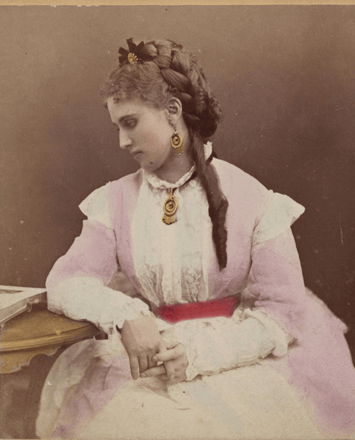Visiting colleges became part of our repertoire of family trips back when my daughter was a senior in high school. We visited many schools to get a sense of the range of possibilities that existed. As was typical, Vassar offered a tour of the campus for groups of prospective students and their parents, led by tour-guides who were undergraduate students. Vassar’s tour had one unique feature. An original campus building, which dated to the post-civil war era, had an exceptionally wide hallway. This, we were told, was because the all-woman student body needed to be able to walk back and forth repeatedly in the halls in their wide skirts, as part of a college program in physical fitness. Vassar, founded on the idea that the education of women should equal that of men, had a program of physical culture to offset criticisms that the school was endangering women’s health by educating them.
Sheila Rothman describes Vassar’s history in her book “Woman’s Proper Place,” published by Basic Books in 1978. The common wisdom in the second half of the 19th century was that people have a limited amount of biological “vital energy.” Rothman (p.24) quotes a contemporary physician: ”Woman has a sum total of nervous force equivalent to a man’s” but the force is “distributed over a greater multiplicity of organs…The nervous force is therefore weakened in each organ…it is more sensitive, more liable to derangement.” Menstruation and pregnancy were times of special danger, when the demands on her system were greater and the possibility of physical and mental disorder increased. Menstruation was a time when women were irrational, even insane. Caution, however, was always called for, as when intellectual activity or other exertion used up nervous energy. Thus, when Vassar was founded, a program was put in place to overcome women’s predisposition to illness through a structured environment and programs of physical exercise. Later, the Association of Collegiate Alumnae conducted a survey to provide research evidence as to whether female college graduates were normal.
Back in the Vassar of the present, our student tour guide wondered: “How could anyone believe anything so silly?” It’s true that we no longer talk about a “vital force.” Yet, broad generalizations about the nature of women and reproductive physiology continue to exist that have an air of plausibility, based today on a different scientific language, one of hormones, neurotransmitters, and other players. Not very long ago, menopause was defined as an “estrogen deficiency disease” that had a uniquely powerful effect on health. Heart disease was a disease of civilization for men and a disease of the ovaries for women. The idea that the menstrual cycle destabilizes women’s minds, creating mood and intellectual changes, continues to exist.
One of my favorites is the idea that women are somehow receptive, loving, and self-denying because of their maternal role, which is somehow mediated by estrogen. Thus menopause may be said to be a time that women regain the ability to focus more on themselves, liberated from a physiological preparedness for reproduction and its needs. Pregnancy is a dreamy time when women are moody and unable to think clearly.
Sure, mothers are receptive, loving, self-denying, but they are also many other things. I love being a mother. My relationship with my daughter has been powerful, unique, and wonderful. However, I know that a mother who is lost in a dreamy connectedness to her child or reflexively puts her child before herself can’t do everything she needs to do. A mother is emotionally connected to her child but also must be an individual who perceives the child accurately, as a separate person, in terms of the child’s motivation and perspective, in order to provide both a sense of connection and the mirroring needed for a child’s emotional development. Further, children misbehave, make mistakes, and must be taught all kinds of things; mothers must have clear-headed, pragmatic, problem-solving skills.
Sometimes we read works by evolutionary theorists and others that presuppose prehistoric women were sort-of-like housewives, dependent upon men for food and safety. This overlooks the fact that women were the gatherers in hunter/gatherer societies, providing a significant amount of the family’s food. Over the course of history, women were potters, weavers, cooks, doing all kinds of necessary work. Women with leisure to devote themselves primarily to childrearing must have historically always been a minority. Would women have survived, or would their children have survived, if they were muddle-headed when pregnant or menstruating, or ruled by their hormones rather than tasks that needed to be done?
Even rat mothers must continue to feed themselves, retrieve pups if they wander off, and engage in other instrumental tasks or their young won’t survive. Being a human mother involves love, receptivity, psychological maturity, thinking skills, and practical competence, neurons as well as hormones.


